Eat Plants, Die Healthy.
“eat plants, die healthy.” was a six week campaign that looked at the benefits of a whole food plant-based diet in the prevention, treatment, and possible reversal of Australia’s top five leading causes of death. It ran across WordPress, Instagram, Facebook, Twitter, and EDM.

A whole food, plant-based (WFPB) diet has been scientifically proven to prevent and reverse many chronic diseases that result from consuming the Standard Western Diet. The campaign, “Eat plants, die healthy.” focussed on how to prevent, treat and even reverse the leading causes of death in Australia.
The weekly content included: a WFPB primer, ischaemic heart disease, diabetes (type 1 and 2), brain diseases (dementia and stroke), lung diseases, and finally an end-of-campaign wrap-up and provision of resources.
Problem
According to the ABS, the top five causes of death in 2020 were ischaemic heart disease, dementia (including Alzheimer’s), cerebrovascular diseases, lung cancer, and chronic lower respiratory diseases. These are non-communicable diseases that are not passed from person to person. The ABS also identified potentially avoidable deaths, including certain cancers, heart disease, diabetes, and infectious diseases.
Among Aboriginal and Torres Strait Islander people, ischaemic heart disease was the leading cause of death, with significantly higher rates of diabetes and chronic lower respiratory diseases compared to non-Indigenous people. These five causes account for over one-third of all deaths in this community.
Solution
Create a six week multichannel campaign for Australians that promotes the adoption of a whole foods plant-based diet as a means of disease prevention and reversal. The first week will act as a primer on dietary-related disease, with the following five addressing our five top killers.
The campaign content should not seem too heavy, so throughout the six weeks, there will be facts and illustrations that highlight the other benefits of a whole foods, plant-based diet – including the benefit for our inhabitant sentient beings and the Earth itself!

Tools
Instagram, MailChimp, WordPress, Twitter, Facebook, Hootsuite, Google Analytics, Procreate, Canva
Role
UX designer, campaign and content strategist, social media marketer, communication designer
Duration
April to May 2022
(6 weeks)
Design Process

Research
Chronic disease
WFPB benefits

Ideation
Concept mapping
Naming
Brand identity

Campaign Content
Weekly content breakdown
(Week 1-6)

The Recipe
Blog posts
EDM
Assets (social media)
Overview

Research
Chronic disease
ABS Data
The top five leading causes of death in 2020:
- Ischaemic heart disease
- Dementia including Alzheimer’s disease
- Cerebrovascular diseases
- Lung cancer
- Chronic lower respiratory diseases
Ischaemic heart diseases were the leading cause of death (10.3% of all deaths)
The top five leading causes of death have remained the same since 2011
For Aboriginal and Torres Strait Islander people who died between 2011 and 2020:
- The five leading causes of death account for over one-third of all deaths
- Age standardised death rates are higher in this community for all 20 killers
- Had rates five times higher than non-Indigenous people for diabetes
WFPB benefits
Academic journals
The BROAD Study
New Zealand, 65 participants “diagnosed with obesity or overweight and at least one of type 2 diabetes, ischaemic heart disease, hypertension or hypercholesterolaemia” Follow-up period of 6 and 12 months “Significant improvements in BMI, cholesterol and other risk factors” “Achieved greater weight loss at 6 and 12 months than any other trial that does not limit energy intake or mandate regular exercise”
Academic journals
Chronic diseases
The CDC note that “6 in 10 adults have 1 or more chronic diseases that mostly can be controlled by nutrition” Greater amounts of animal-based foods are “associated with significant increases in plasma cholesterol concentrations,” and “significant increases in chronic degenerative disease mortality rates” Plant-based foods provide “disease-inhibiting antioxidant vitamins associated with lower rates of several cancers”
Coronary artery disease (CAD)
Almost non-existent in countries that consume a plant-based diet Cultures include the “Tarahumara Indians of northern Mexico, the Papua highlanders of New Guinea, and the inhabitants of rural China and central Africa” “Hundreds of thousands of rural Chinese live for years without a single documented myocardial infarction” Mortality rates “inversely associated with the frequency of intake of green vegetables”, “plant protein, legume, and light-coloured vegetable intake” Low-fat WFPB diet “can achieve total disease arrest and selective regression even in advanced cases” and give patients the means to “take control over the disease that was destroying them”

Ideation
Concept mapping
Focus on whole foods, plant-based nutrition as an overarching theme, with disease prevention and reversal for weekly content.
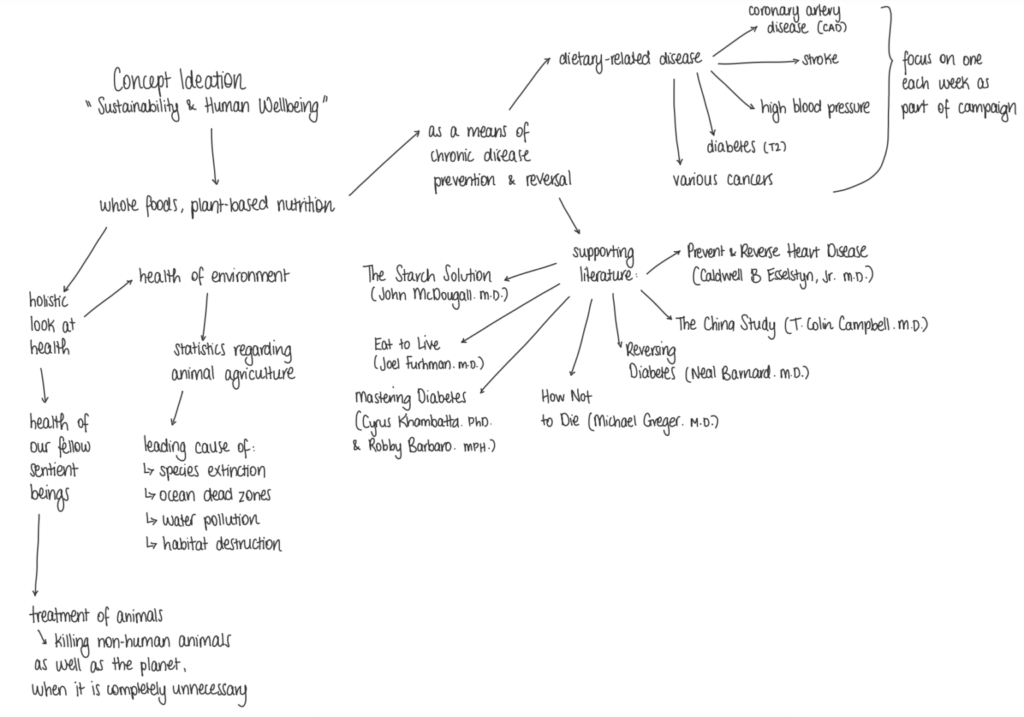
Naming
Though I was set on ‘Highway to Health’, the handle on Instagram and website name were already taken. Likewise, I could not use a .org.au or .com.au suffix, as I would have to provide an ABN or ACN. I then decided on ‘Eat Plants, Die Healthy’. It is very tongue-in-cheek, and has an element of self-deprecation, which shouldn’t upset carnists.
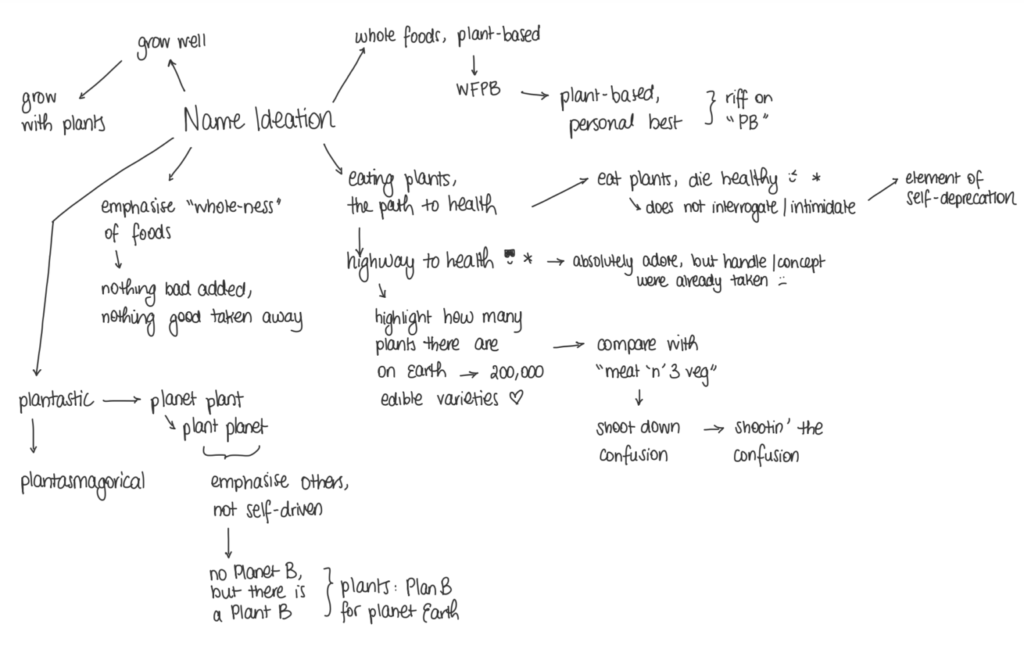
Brand identity
Fonts used are Scripter and Montserrat Semi-Bold, with Scholarly Ambition used as an alternative online (for blog posts and EDM). Bright colours based on antioxidant-rich whole plant foods provide the palette, complementing the logo of a basket of vegetables.
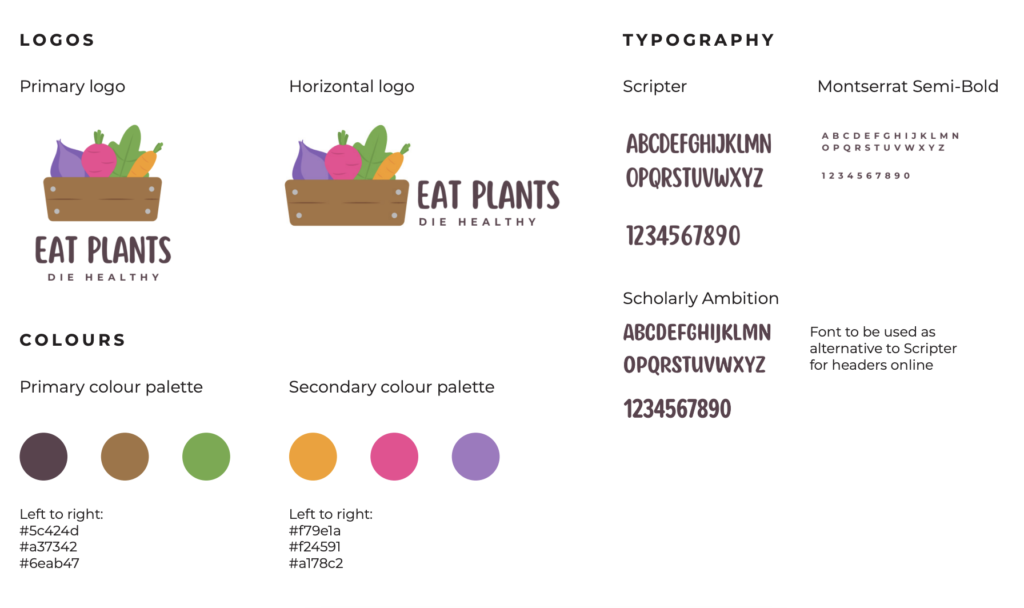

Campaign Content
Weekly content breakdown

Week 1: Whole food, plant-based primer (WFPB 101)
Define what a WFPB diet is (and is not), and introduce people following the platforms to the prominent faces of the plant-based movement.
More generalist approach: pointing out the health, ethical, and environmental reasons to adopt a (whole food) plant-based diet.

Week 2: Ischaemic heart disease
Outline how a WFPB diet has been shown to prevent and reverse heart disease, as evidenced by Dr. Caldwell Esselstyn, Jr. and Dr. Dean Ornish.
Focus on genuine heart health, and preventative measures will be discussed, along with evidence of the reversal of IHD/CAD.

Week 3: Diabetes (types 1 and 2)
Diabetes is disproportionately killing more members of the Aboriginal and Torres Strait Islander community than other Australians.
Focus on the lack of access to fresh food (food deserts) and overwhelming density of ultra-processed foods in this area (food swamps). Reference the documentary “They’re Trying to Kill Us”, about the intersection of the food industry and the Black community will be discussed.
Cite studies from Dr. Neal Barnard, Dr. Cyrus Khambatta and Robby Barbaro.
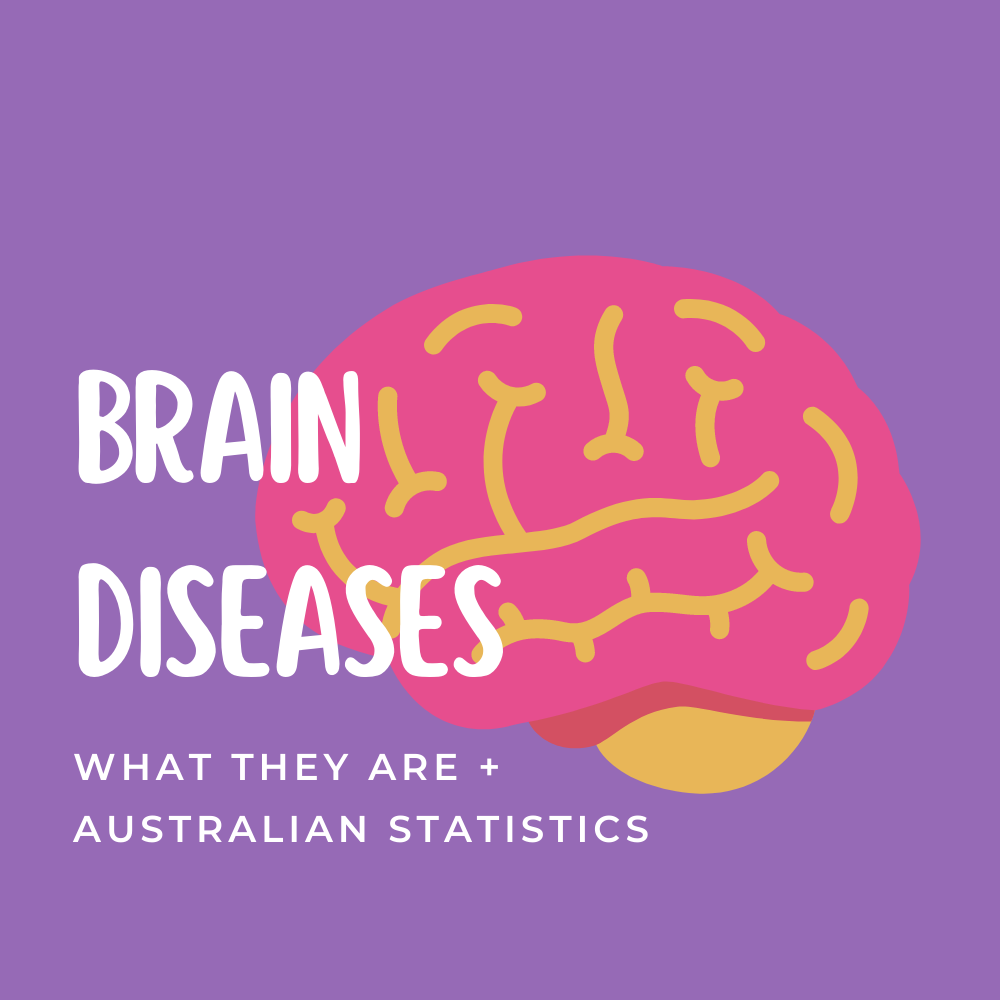
Week 4: Brain diseases (dementia and stroke)
Dementia, including Alzheimer’s disease, ranks as Australia’s second leading cause of death. Strokes fall shortly behind. Focus on brain diseases, and reference work by Drs. Dean and Ayesha Sherzai “The Brain Docs”, who have documented extensive research into brain health and a WFPB diet.
Alzheimer’s is nowadays being referred to as Type 3 Diabetes – insulin resistance of the brain. This will segue nicely from the previous week’s content.

Week 5: Lung diseases
According to ABS, lung cancer and chronic respiratory diseases “rounded out” the fourth and fifth top killers; combined into one week as diseases of the lung.
As people know not to smoke and still do, instead of focussing on the health impact of tobacco, note the particular foods that may be of benefit for lung health. Reference Dr. Michael Greger’s book, “How Not to Die”, especially his chapter on Lung Cancer.

Week 6: Wrap-up and resources
At the campaign’s end, provide people following with further reading and materials to put their newfound knowledge into action!
Mention big-name influencers, as well as books, documentaries, cookbooks or recipes that they can consume and implement into their lifestyle.
Possibly continue with the campaign at a more subtle level, depending on followers and feedback (and time!)

The Recipe (Outcome)
Blog posts
Extensive research went into each blog post, to ensure that neither misrepresentation of nor misinformation about was provided of the whole food, plant-based lifestyle. The website design changed midway through the campaign to better reflect its branding, which encouraged greater dwell-time on the homepage and subsequent blog posts. The weekly posts were nested just below the fold so that users could easily access their information without hassle.
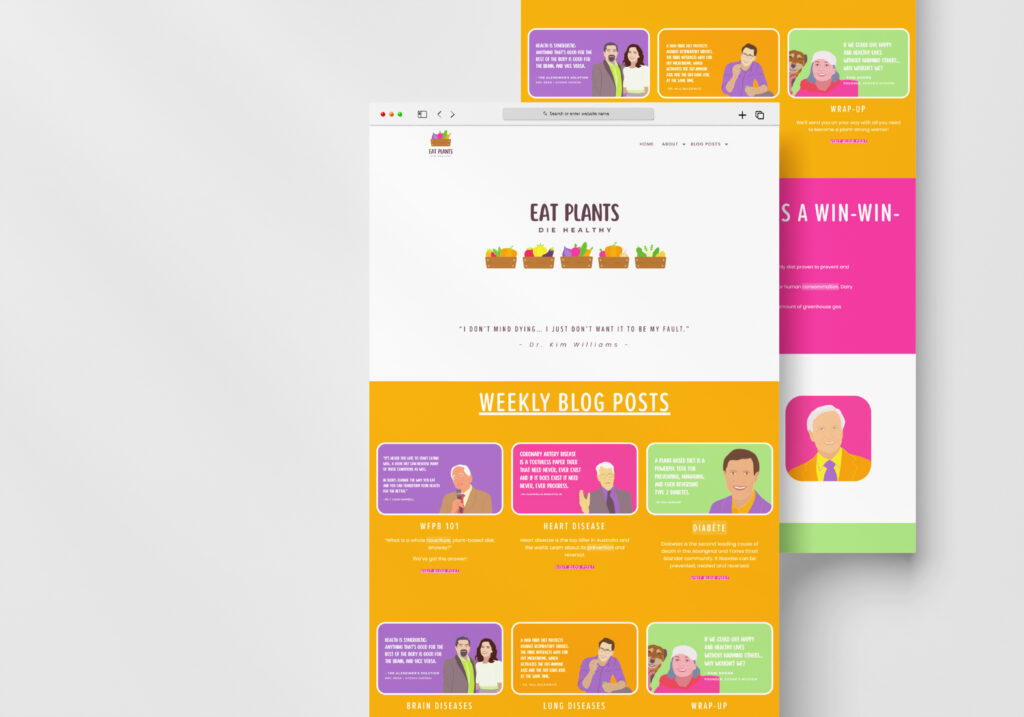
EDM (electronic direct mail)
Weekly newsletters using MailChimp integration were sent out each Monday to let the audience know what was to come for the week. Links to the blog post were attached beneath a hero image that covered an overview of that week’s focus. Beneath are the first two emails from the six week campaign.
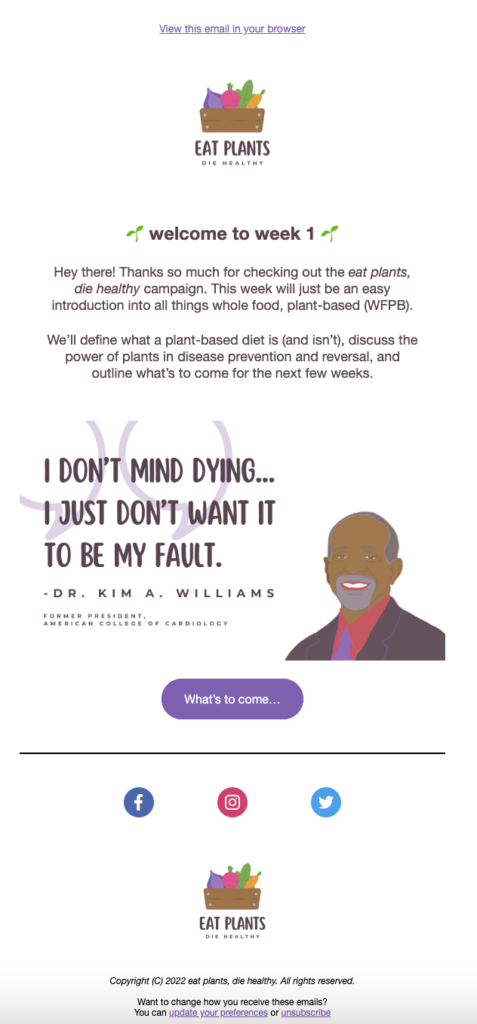
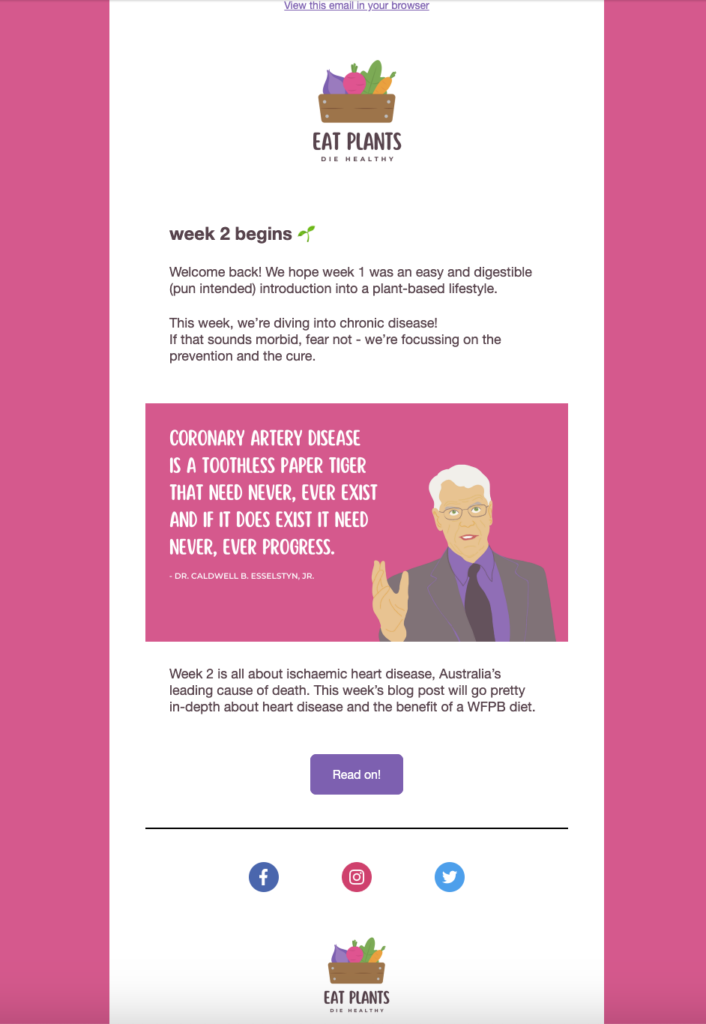
Assets
Below are a few of the illustrations I created to engage users and reach well-known doctors and leaders within the movement whom I was discussing each week.
Overview of campaign success
A key aspect in the success on this platform was follows from heroes in the plant-based movement.
Dr. Caldwell Esselstyn and Drs. Dean and Ayesha Sherzai (139k and 77k followers) only follow 500 and 700 people, yet followed this account. Not only would this have been favoured algorithmically, but also that they directly shared my content to stories as well.
Results at a glance
Goals achieved:
50/105 (entire campaign)
11/15 (end of campaign)
Most successful platform: Instagram
Most successful week:
Week 4 (sharing content)
Week 6 (likes and follows, growth)
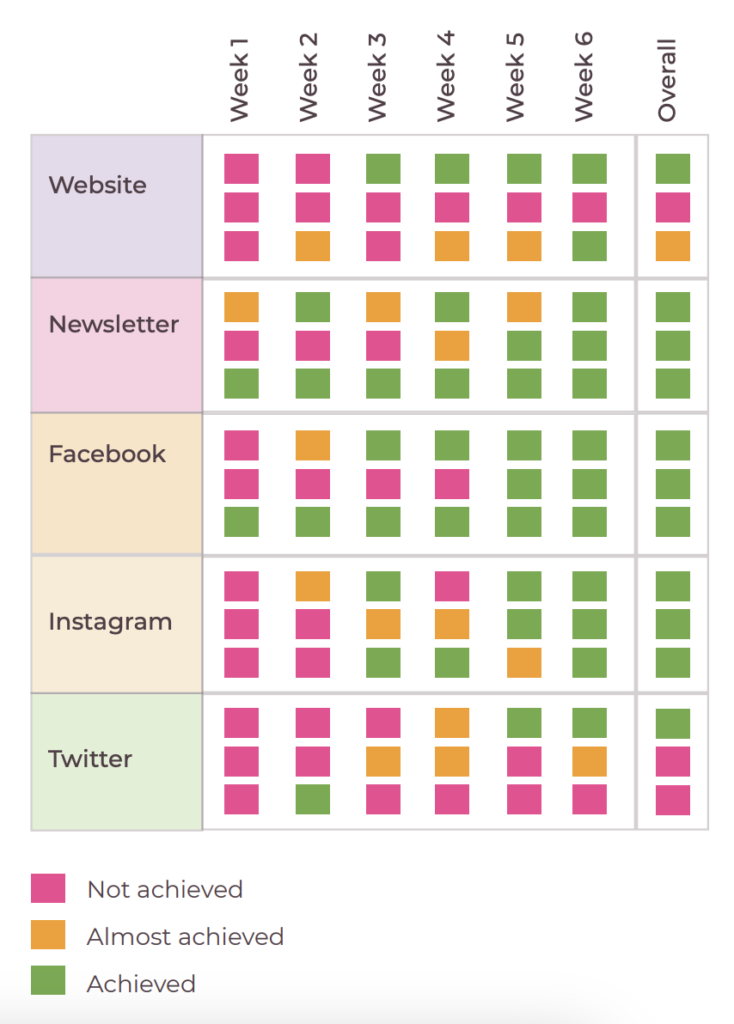
Focus on Instagram
Observations
- Most successful platform during and after the campaign
- Viral posts in week one and six
- One post reached 4000 people, with over 180 likes, 30 shares, and 60 saves, and resulted in an increase from 100 to 150+ followers
- Feedback from everyday people, organisations and doctors encouraged me to continue the campaign in future
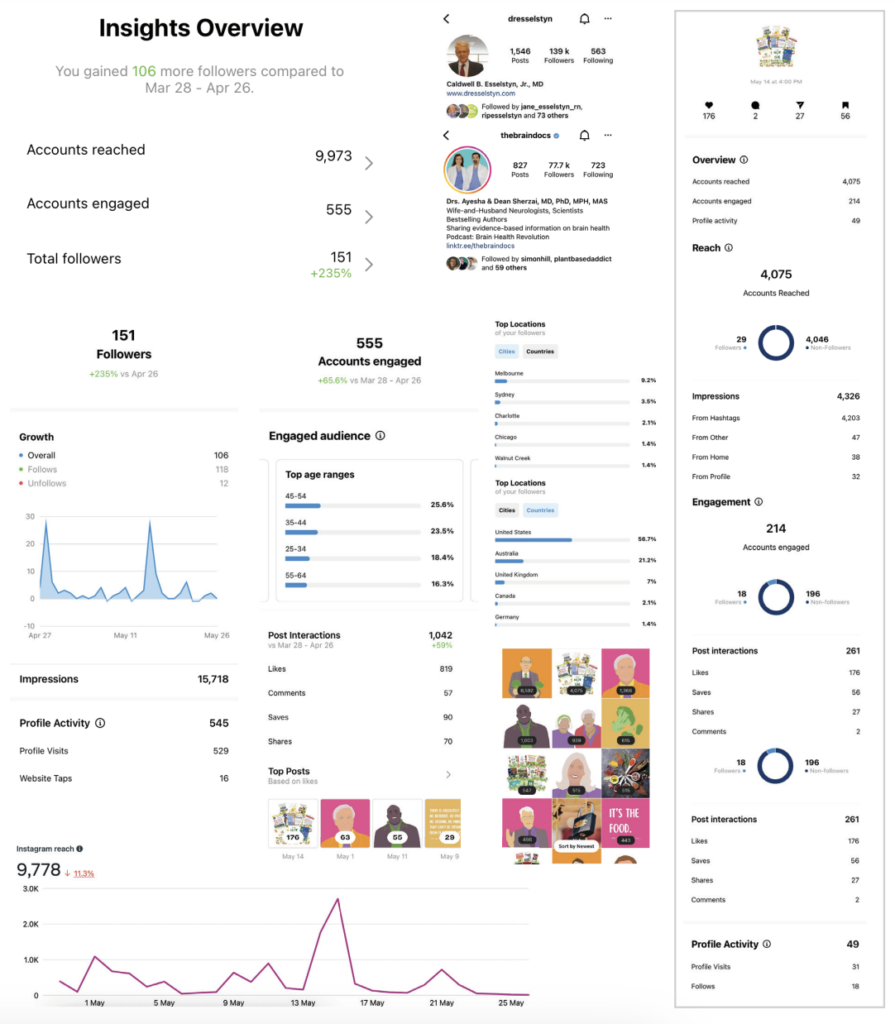
Reflection
Given the success of the “Eat plants, die healthy.” campaign specifically on Instagram, I have decided to continue utilising this platform as a personal project. As the multichannel campaign came to an end, I made the decision to close the pages that did not perform well (Facebook and Twitter), and I also removed the option to sign up for the newsletter from the website.
While the website was closed, it might be beneficial to relaunch it. I would have preferred to have more people spend a longer amount of time reading the lengthier blog posts. It was disappointing to see that even though I thoroughly researched and dedicated time to write posts about our leading causes of death, the analytics showed that people were not reading them or just skimming through for less than two minutes.
I found that the Instagram page has the potential to transition from its highly polished branding to a platform where individuals can connect and share important life-saving information with like-minded people. This is particularly true in cases where I could have interacted more frequently with larger accounts during the campaign. Additionally, in the future, I would like to focus not only on promoting a whole food, plant-based diet but also on discussing the ethics of veganism and promoting important advocates of this cause.
